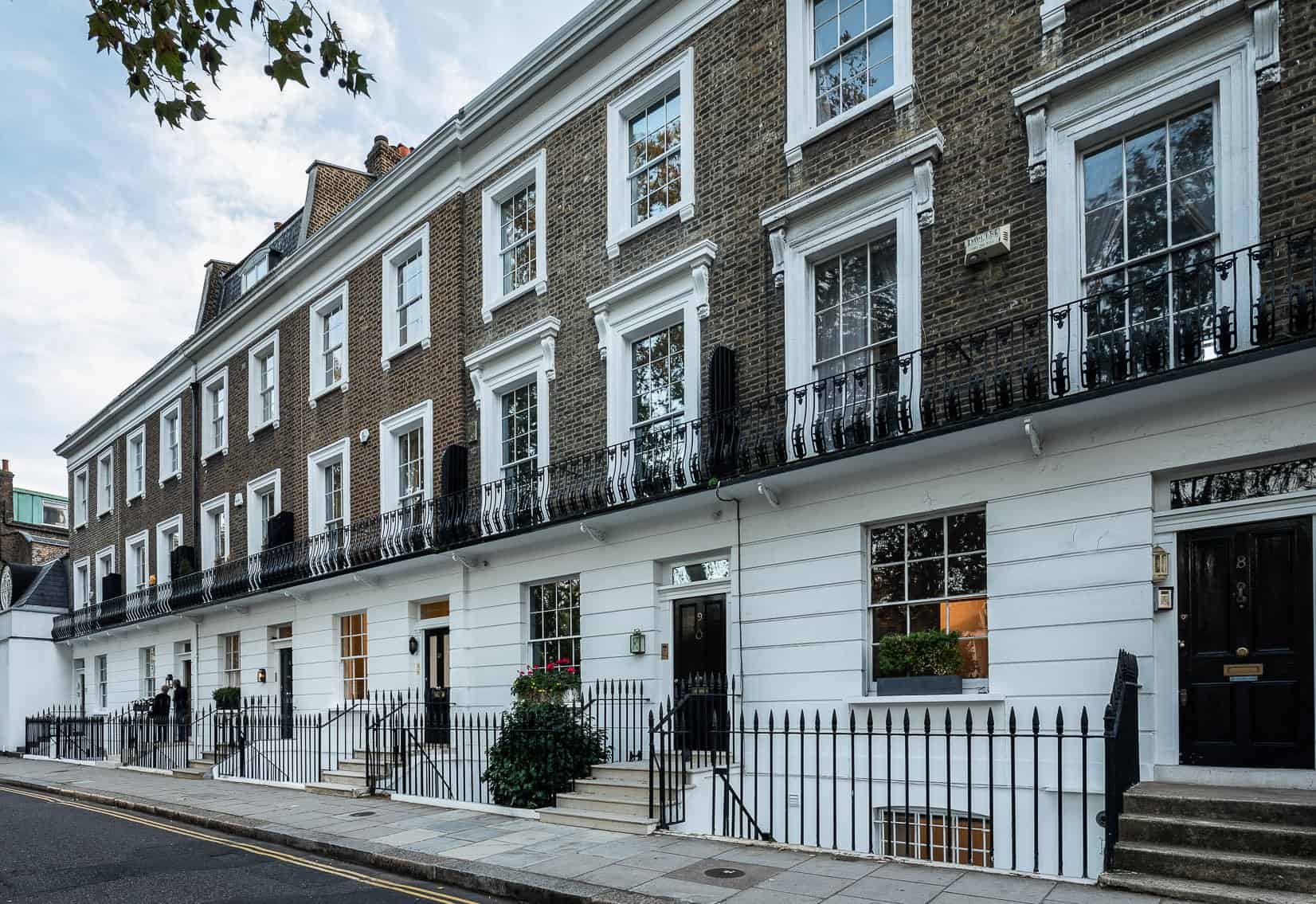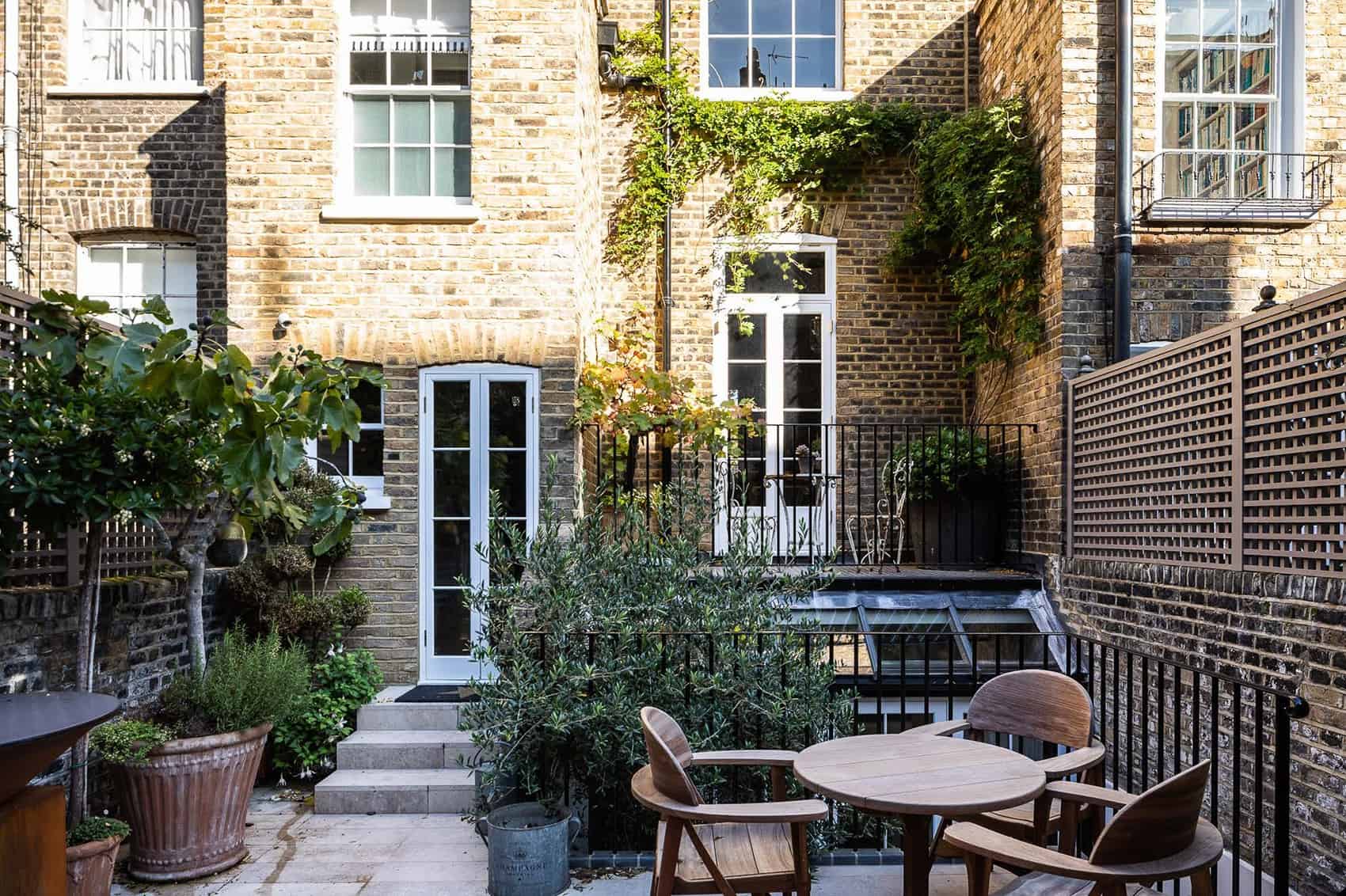Chelsea Townhouse

Chelsea Townhouse
Animators Mark and Suki fell in love with this Georgian terraced townhouse, but were initially too scared to buy a Grade II listed building in need of total restoration. When it went up for sale again, one year later, they decided not to let the opportunity slip by and – with our help – they would take on the intimidating challenge of a listed renovation.
When they bought the house, it was entirely stripped out, giving them a blank canvas on which to paint their ideas. But even with nothing but its bare structure, they could feel that it had a one-of-a-kind character, with its grand, high ceilings, original period features and view looking over the Saatchi Gallery.
Mark and Suki had altered many of their homes over the years, but nothing compared to the scale and complexity of this project. Living outside the property meant they could take their time with their decisions, which they would have had to anyway, as the planning process took over a year due to having to apply for both planning permission and listed building consent.
When working on a period building, you often find yourself having to deal with the ghosts of every prior builder and architect who had worked on it. Various alterations, additions and little fixes were hidden throughout the house, and the more we peeled back, the more revealed themselves, complicating our plans.
Even if the building hadn’t been touched since it was built, the sheer age of the building made work unpredictable. There wasn’t a right angle to be found anywhere in the house and spirit levels were almost useless – which gave the house charm, but was far from the clean lines that architects prefer to work with.
Listed buildings are even more challenging, as the entire building fabric is protected, requiring us to carefully consider and gain approval for every alteration, no matter how small. Any additions need to either use matching materials or high quality alternatives that are indistinguishable from the original.
Luckily, Mark and Suki’s objectives for the design didn’t often clash with the Heritage Officers. They didn’t want to significantly change the building, they wanted to preserve it and even reinstate period features that had been lost to time while stripping out additions that were inappropriate.
Enough of the period details had survived for us to be able to fill in the gaps where they were missing. The unsightly, blocky concrete steps leading down to the garden were stripped out and replaced with stone paved steps to match those at the front of the house, along with countless other repairs and matching replacements of cornices, balustrades and fireplaces.
For some details, we looked elsewhere on the road for inspiration. For example, we matched entablatures and pilasters (period column decorations typical of Georgian architecture) from neighbouring houses that were missing from Mark and Suki’s home.
We were also permitted to stray from the original architecture to make improvements that looked natural, such as replacement of an awkward-looking casement bathroom window on the top floor to a more traditional sash window that – while not original – complements the rest of the design.
The biggest change was the demolition of an unsightly lean-to extension in the rear lower ground to replace it with a smaller, but more aesthetically appropriate glass and timber structure featuring traditional detail.
But most of the improvements are the small quality of life changes that we take for granted. Wiring, plumbing, lighting and Ethernet access will be brought up to current standards, along with a brand new kitchen and bathrooms so that Mark and Suki – and future generations – can make the most of this beautiful Georgian home.














